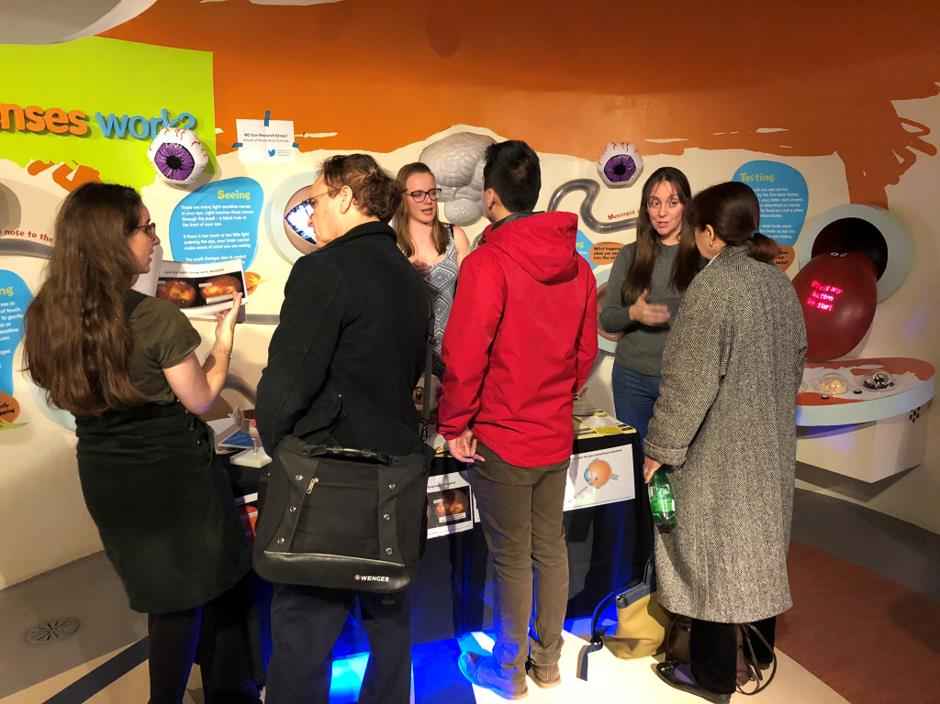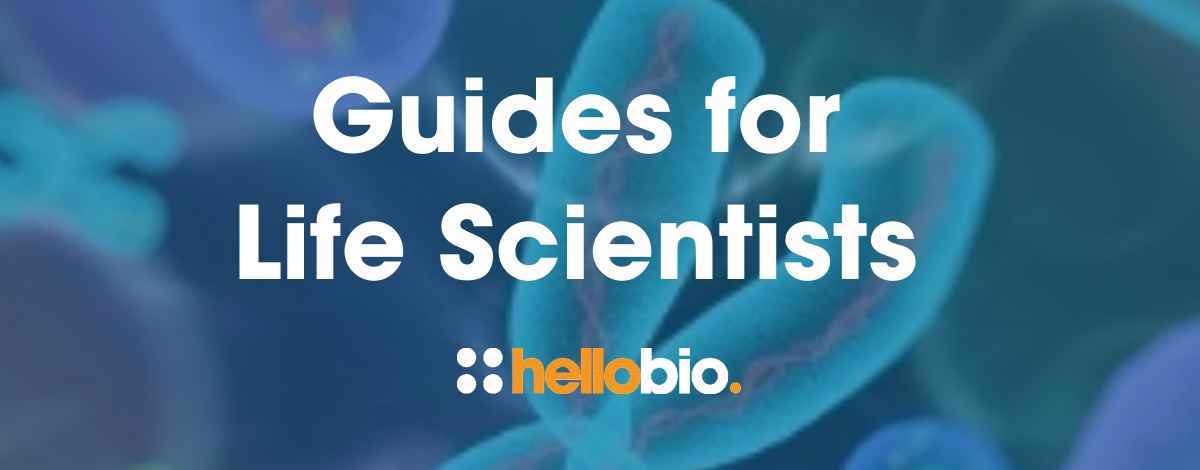Engaging the Public, Patients and the Next Generation with Your Science
Communicating your research to a scientific audience can be pretty nerve wracking. You prepare detailed presentation slides with graphs, time the talk to perfection, and answer detailed questions on specific experiments – all in front of an audience of experts.
However, communicating science with the general public or patients is different. It requires stripping back the detail and focusing on the bigger picture and the impact of your research. Effectively communicating your research and ensuring that the public has a good understanding of it is important for preventing misunderstanding and false headlines (as outlined in this excellent blog article on improving public understanding of science).
In this blog post, I will highlight some of the resources available to help scientists engage with public and patient audiences, as well as share advice from my own experience.
Public Engagement
Many grants come from public money and taxes, so it’s important to share with the public the research that’s happening and what impact it could have for society. Becoming involved in public engagement can initially feel daunting, however there are lots of places to seek help – such as professional organisations and university engagement teams.
I am a member of the Eye Research Society and The Association for Research in Vision and Ophthalmology (ARVO), and was accepted onto their Science Communication Training Fellowship this year. I’m part of a cohort of 20 early career researchers and have been taking part in webinars, assignments and planning an engagement event. It has really helped me bridge the gap between understanding public engagement and communication methods, especially with the help of a well-organised programme, with a fantastic programme manager and a cohort I can reach out to for advice.
ARVO Science Training Fellowship 2020 Cohort
I have also reached out to my university’s public engagement team, who put on events to showcase research at the university and offer small grants to fund engagement activities. I applied to a public engagement event and proposed a poster explaining our research. After a few meetings with the public engagement team, we established that a poster was actually pretty boring, and probably wasn’t the best way to engage with the audience. They helped me to formulate what the take home messages were going to be for our stall and develop more engaging activities, such as including an anatomical eye model and a game of snap with different facts about eye diseases. I also learnt about the importance of evaluation and getting feedback from the event to help improve activities for future events. Get in touch with your university’s public engagement team and see what support is available to you.
Choosing the right time to engage is also important. There are global and national campaigns which can enhance the impact of your engagement and the audience you reach. For example, Brain Awareness Week is a global campaign from 16th-22nd March 2020, coordinated by the Dana Foundation (and this year is the 25th anniversary!) Events occur globally and are organised by local teams with support from large organisations such as British Neuroscience Association and FENS. Other events such as the worldwide science festival Pint of Science can be a casual opportunity to share your research at a local pub or café during the festival. Pint of Science takes place from 11th-13th May 2020, and is organised by local teams in different countries and cities.
Patient Engagement
Interacting with patient groups and engaging with the people who could benefit from your research has had a hugely positive impact on science. Volunteering to talk about your science at a patient group can be rewarding for both your research, and the audience.
Giving an engaging talk to patients will be very different to a talking at a conference, so don’t share the in-depth, complex science. Instead, focus on the bigger picture and the impact of your research. Think about the audience and the patient group. For example, I work on eye disease and the patient groups we attend have individuals with vision loss. Therefore, we don’t use presentation slides or anything too visually-focused. Instead, we describe our research and have enlarged individual printouts as an option to view images. Although it was initially challenging to think about how to describe our research and laboratory techniques without using any visual aids, it has really helped us to understand the overall concept and basic picture of our science.
Pitching a new research idea to patients can be beneficial to you as a researcher too, to help formulate research ideas and determine what the greatest needs are for these patients. It can also be beneficial for the patients, to help make a contribution to new discoveries and ensuring research is occurring in what areas that are important to them. This could be as simple as asking what they would like to become available for the disease – for example, developing eye drops, instead of injections into the eye. Reach out to a patient group within a society and ask if you can go along to chat to patients, and offer to present some of your research.
Engaging with the Next Generation
As a science community, we can help to engage the next generation with science. Becoming a Science, Technology, Engineering and Mathematics (STEM) Ambassador is a good place to start to engage the public and young people with science. The scheme provides online training and a DBS check, which is required for working with potentially vulnerable young people. STEM hubs advertise for volunteers to help with activities or visit schools, which can be a great opportunity to talk about your research and science engagement in general.
There are plenty of creative ways to engage with young scientists, rather than holding talks or events. For example, Letters to a Pre-Scientist (LPS) is a fantastic initiative formed by a collaboration between scientists and educators, linking students with a real-life scientist pen pal. This provides personal insight into science beyond the classroom curriculum, with a focus on low-income schools. A STEM professional is paired with a student based on their shared interests, and they exchange letters at set times throughout the year on topics like careers, which the students then discuss in the classroom. STEM professionals receive online training and become part of the LPS community. The hashtag #LetterOpeningParty is used on Twitter to share pictures of scientists and teachers with their letters. This is one of many great initiatives out there to inspire young people, bring ‘real-life’ scientists into the classroom, and help to eliminate stereotyping and negative preconceptions of scientific researchers.
Social Media and Science
Science engagement is also happening online, and there are a lot of great opportunities to get involved. Social media platforms such as Twitter, Facebook and Instagram can help you potentially reach a wide audience. Many research groups and individual scientists have a social media presence, which is often followed by fellow scientists, the general public and patients, providing connections between a range of different people.
There are science-focused Twitter accounts which have guest curators each week and have large, established audiences. @RealScientists has over 83.5k followers, and I was given the opportunity to curate this account last year. This provided me an opportunity to reach its followers and discuss eye research, science in general at a basic level (e.g. threads on science techniques using GIF animations) and have Q&A sessions.
Alternatively, I’m a Scientist is an online space where school students can connect with real scientists through an online chat competition. The students ask science questions and then vote for their favourite scientist (whilst eliminating their least favourites!), with the winning scientist awarded £500 for public engagement activities.
As a note of caution around online activities, once something is posted online it cannot be easily taken back. When posting, try to be positive, stay away from confrontation and arguments (you can block accounts), but make sure you also have fun!
There are plenty of opportunities to get out of the lab and engage with the general public, young people and patients. It may seem intimidating at first, but understanding your science and being able to share it with others can be extremely rewarding and help you to see the bigger picture and purpose of your research. Contact local patient groups, engage with the STEM ambassador scheme and get involved online.
______________________________
Dr Chloe Thomas is a Post-Doctoral Researcher within the NOScar research team, School of Biomedical Sciences, Institute of Clinical Sciences at The University of Birmingham. Her research interests are in ocular injury and disease and the development of novel therapeutics. She completed her PhD research on cell death mechanisms in the retina and optic nerve after blunt impact and explosive blast ocular trauma. She is currently researching topical therapies for the treatment of age-related macular degeneration.
- You can follow Chloe on Twitter at @ChloeThomas_Dr
- Follow the School of Biomedical Sciences on Twitter at @unibham_SoBMS
- Connect with Chloe on LinkedIn here.
- Find Chloe on ResearchGate here.
- View Chloe’s Staff Page here.
- And read Chloe’s Interview with Hello Bio here!
Fight for Sight is a national charity funding ground-breaking research into sight loss:
___________________________
If you enjoyed reading this article, why not check out the other resources available on our blog. We are passionate about supporting life scientists, early career life scientists and PhD students - with really low- priced reagents and biochemicals, travel grants, and resources to help with both personal and professional development. We know how tough it is - so we hope you find these helpful!
Advice & guidance for life scientists
Click below to view our essential guides and articles to support life scientists, PhD students & early career life scientists:
Travel grants
Every month we give away $500 to PhD students and Postdocs so that they can attend a scientific conference - click below to find out more:
Wellbeing for scientists
Click below for our resources to help improve your wellbeing:
Technical resources
Try our Molarity Calculator: a quick and easy way to calculate the mass, volume or concentration required for making a solution.
Try our Dilution Calculator: an easy way to work out how to dilute stock solutions of known concentrations
And - when you get to the stage of planning your experiments, don't forget that we offer a range of agonists, antagonists, inhibitors, activators, antibodies and fluorescent tools at up to half the price of other suppliers - click below to see how we compare with other suppliers:





















